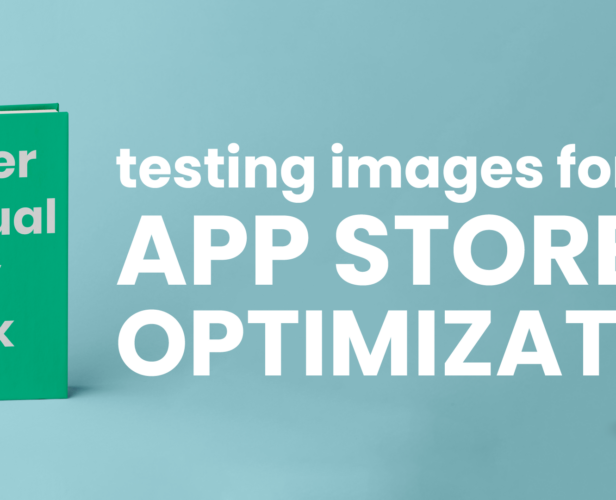Resources > All
Insights and tips about the games industry
Subscribe for gaming insights, industry reports and product updates delivered straight to your inbox.
#Game Design
Getting Mobile Multiplayer Right (part 2): Design, testing, and scaling
Image courtesy of Hypernia Gaming News. As we saw in part one of our multiplayer series, the mobile multiplayer opportunity is bigger than ever. And there are a lot of reasons you should make multiplayer part of your next mobile release. But how do you get started with actually implementing multiplayer into your mobile game? There’s a lot to consider. And a bounty that makes it easier than ever to get right. You’ll need to read more than a two-part blog post to master it all, but we’ve done our best to round up as many pointers and links to get you started on the right path. So let’s dig into part two. There are rules to mobile Over the years, mobile gaming has diversified (and then some). Game genres like casual, mid-core, hyper-casual, pay-to-earn and premium now offer very...
#Marketing & Publishing
How Homa’s LaunchOps team helps you transform your prototypes into Monster Hits
Editor’s note: This article was written and published by Homa Games. You can find their original version here. So what exactly happens once you submit your prototype at Homa, and how does it all work? In this article, Homa’s team take you through the process and explain all the essential info you need to know about scaling your next hit. Here’s what they said. The main challenge behind game publishing Publishing a game might seem straightforward; however, the list of actions to make it the next hit is quite long. In a short period, you need to make sure there are no bugs, the ad monetization is working properly, the testing metrics are good, and the data is analyzed correctly. Don’t you worry; the Homa Games team is there to help you figure it all out! The Homa Squad supports...
#GameAnalytics Updates
GameAnalytics A/B testing allows you to go deeper
We’ve improved our A/B testing feature on GameAnalytics so you can optimize further your games and try out new great ideas and concepts. You can now stop user acquisition and exclude offline users from your tests. A/B Testing: Stop acquiring users We notice many game developers want better control over the allocation of users in an experiment. There are situations where developers would prefer a cohort to remain active; however, no more users join this experiment. For this reason, we introduced a functionality where you can choose if and when you’d like your experiment to stop allocating more users. How does it work? While an experiment is running (active), the number of users allocated to the test is displayed on the page. When you want your test to stop assigning more users, click the Stop Acquiring Users option from the...
#Game Design
Getting Mobile Multiplayer Right (Part 1): History, Genres, and Motivations
Adding multiplayer elements to your mobile game is a straight-up win-win situation. It creates a sense of community, brings a competitive edge, and gives your players a reason to come back. Taking all that on might feel intimidating. But today, building quality mobile multiplayer is easier than you might think. But how exactly do you make your mobile game multiplayer? What steps do you need to take? And what do you need to consider? We will cover in this two-part article that will help set you on the path to mobile multiplayer glory. This first part will look at the broad concepts and overarching considerations. And next time, we’ll dive into the tech and techniques for part two. Yes, your game is suitable for multiplayer We appreciate there are different types of games. But multiplayer isn’t purely about competition and...
#Ads & Monetization
How will monetization models change in 2022?
Editor’s note: This article was written by the clever minds at HyperBid. Hello there. I’m Ahmet, the business director here at HyperBid. Aside from the obvious ups and downs last year, we also had some big changes in how the monetization industry works. From new models improving revenue for developers to changes on how we can collect data. So I thought it’d be useful to summarise the four big changes we’ll see in 2022. 1. The waterfall model will take a step back There are two models you can use when selling the advertising space in your game. Either you use waterfall, which methodically runs through a set list defined by you, until you get an ad bid above your defined floor price. Or you can use in-app header bidding, where you programmatically scan through every bid for the best...
#Strategies
Our seven predictions for mobile gaming in 2022
The GameAnalytics crew dug out the crystal balls, consulted the oracles and tossed tea leaves all over the office. None of that helped and it was a pain to clean up, so we decided to ask our experts instead. So after a lot of thought, consideration, and a couple of debates, here’s what our team predicts will happen in 2022 for the mobile gaming industry. 1. Augmented reality games and technology will grow We’re going to see a surge of Augmented Reality (AR) games and technology in the next year. Over the last few years, AR has been simmering beneath the surface, getting ready to boil over into the mainstream. It’s clear that big things are on the horizon. The biggest player in AR, Niantic, was recently valued at $9 billion and raised $300 million in investment, which it says...
#Game Mechanics
Flex Run 3D: how to make your first hit in nine months
Editor’s note: This article was originally published by the clever clogs at Voodoo. You can read the original version here. In December 2020, two young programming students called Harvey and Mathis founded Blue Monkey Studio. By September 2021, only nine months later, their first hit game had entered the charts. Flex Run 3D reached number 1 in the Android charts in 39 countries, including the US, and number 2 on iOS US. But what’s the story behind this super speedy success? How did they go from hyper-casual beginners to the top charts in just nine months? The two co-founders, Harvey and Mathis, joined us at the recent Voodoo Live event in Paris to reveal exactly how they managed to bag their first hit game in such little time. Read on to find out more about Flex Run 3D and their three key secrets to success....
#GameAnalytics Updates
2021 Roundup: What we’ve done, what we’re doing, and where we’re going
Over the last couple of years, we’ve released a new website, tools and features, completely new product lines. We’ve been building your toolkit to not only perfect your titles, but to scale and thrive in an ever competitive industry. So in this blog, we’re going to cover: A recap of all of the tools and products we’ve released. Our company structure and what’s new. And our plans for 2022. But before we move on, we want to say a massive thank you to all of our users and supporters, and give a shout out to the crew behind GameAnalytics. We’re lucky to have an excellent team in our cavalry, and a great community to listen to – your ongoing support and feedback has helped shape our tools and our business. Let’s get to it. A look back: What we’ve done...
#ASO
Homa Games’ Guide to App Store Optimization
Editor’s note: This article (and report) was written by the clever clogs at Home Games. You can read their original here. Game’s go through a lot of stages from ideation to executing and testing during the publishing cycle. But having a game published and up and running in the app stores is only the first step in making it accessible to the widest audience possible. For game creators, the app stores are the main point of contact with users, and they are the place where users will decide if a game is worth downloading or not. So, in order to put everything in your favor, you will need to make sure your game is presented in the best possible way, with its main features displayed and with images and wording fully optimized. That’s where app store optimization (ASO) comes into play. Every...
#GameAnalytics Updates
AdMob Integration, Raw Export and GameIntel Update
We’re coming to the end of the year, and what a year it has been. We’ll have a roundup blog coming out soon, but there’s still plenty to do and fill you in on before we start chatting about 2022. Recently, we’ve had a few major updates across all of our product lines. Here are the highlights: You can now analyze ad revenue from AdMob in your GameAnalytics account. We also added a new DataSuite to our product family, Raw Export. Ranking data for over 80 sub-genres is now available in GameIntel. So without wasting any more time with the intro’s, let’s dig into the main course. What’s new in GameAnalytics? We’ve created an integration with AdMob We partnered with Google’s AdMob to bring you Impression level revenue data (ILRD) from their network directly to your GameAnalytics tool. All to...
#GameAnalytics Updates
Ranking Data for Over 80 Sub-Genres Now Available in GameIntel
Line yourself up, recruit. You can now track ranking games across more types of charts than ever before; made up of an entire new division of 80+ sub-genres. Including everything from ‘Snipers’, ‘Tower Defense’ through to ‘Romance Games’. We have three main changes for you to get through today. In GameIntel, you can now: Filter the charts by over 80 sub-genres. Sort the ranks by specific metrics, like highest retention or longest playtime. Unlock this with our new Starter tier (only $99 a month). There’s a lot to explain here. So gear up and let’s get started. What’s new in GameIntel 1. Filter the charts by over 80 sub-genres In addition to the standard App Store categories (such as hyper-casual, RPG, and Sports), you can now explore aggregated GameIntel charts for more than 80 additional sub-genres (like Tower Defense, Snipers,...
#ASO
“Squid Game” Mobile Games: Who Made It Into The Charts?
Squid Game games turns Mobile Netflix released the new show, Squid Game, on September 17th 2021. Over 132 million people watched the show in the first 23 days of its release, with 4.4 million new people subscribing to the platform (presumably to see the series). It’s easily a new record for Netflix, overtaking Bridgertons number 1 spot. Netflix have even announced that they’re going to make their own “Squid Game” game, as an attempt to increase its popularity in regions like North America. Netflix aren’t the only ones reaping the benefits of this Korean Battle Royale style show. We’re being flooded with memes, halloween costumes, and merch around the hit, all across the globe. But more importantly, mobile games. We’ve seen hundreds of hyper-casual games enter the app stores, all inspired by the Squid Game theme. With the topic still...
#Marketing & Publishing
5 Reasons Game Devs Should Start Making Hyper-casual Games
Editor’s note: This article was originally crafted by TapNation. If you fancy reading the original, you can find it here. It’s no secret that creating a game can be pricey. Hiring a strong development team is just the start of your journey. Aside from the months (even years) of developing a game, when you start focusing on your marketing and ongoing user acquisition campaigns, the expenses and costs can pile on (before you’ve had a chance to make any revenue). Making it near impossible for smaller dev teams to enter the market. Hyper-casual is changing that. These games are turning into a developer’s stepping stone into kick-starting their career in the gaming industry. Without the need for large initial investments. And to get a better idea of how the hyper-casual genre can help game makers enter the professional world of...
#Editor's pick
Game data pipeline: Building vs buying
As a large number of studios, publishers, and game developers are heavily relying on data to guide their decisions, they need to decide between building or buying. But which one is more efficient? To assist you in understanding the Total Cost of Ownership (TCO), we broke down the following key considerations: Setup requirements Cost calculation Team needs and recruitment
#Editor's pick
Mobile gaming benchmarks for Q1 2024
Uncover the industry’s performance with Q1 2024 benchmarks. Explore key metrics like retention rates and session engagement to benchmark your games against industry standards. What’s inside? Retention benchmarks for casual, classic, and mid-core games Session length benchmarks for games launched in North America, Europe, the Middle East, and Asia Session count benchmarks across 15 game genres
#Editor's pick
Grow your revenue with Xsolla Web Shop for Mobile Games
“Xsolla anticipated this seismic shift earlier this year, when we launched multiple products that are being actively used by some of the world’s largest game companies to increase profit and build closer relationships with their mobile and pc players. We’ve now combined these products and learnings into an elegant new solution called Xsolla Web Shop for Mobile Games,” said Chris Hewish, President of Xsolla. Through Xsolla Web Shop for Mobile Games, developers can expect significant revenue growth and can reach new players in new geographies previously unavailable to them. This solution solves many challenges developers face; such as discoverability, declining profit margins, lack of control over the user experience, access to localized payment methods, cross game marketing, more efficient user acquisition, effective collaboration with creators and influencers, and much more. Three industry-changing announcements make this opportunity more timely than ever:...
#Editor's pick
2023 Roblox report: Behind the data with GameAnalytics
Download a comprehensive report of Roblox player behavior and game performance based on GameAnalytics data from 2023. This report highlights critical benchmarks and insights to help Roblox creators optimize their games. What’s inside? Devices analysis Players’ daily session frequency Average revenue spent per user Session length and count benchmarks Retention benchmarks Revenue benchmarks
#Editor's pick
The Game Developer’s Handbook to Mastering Data Solutions
Data is the key to success in the ever-evolving landscape of game development. Explore this guide to transform your data into insights using our turn-key data solutions. What’s inside? Our comprehensive guide explores cost-saving strategies and real-world applications for advanced use cases. Learn how to seamlessly integrate data sources, unlock detailed player insights with Player Warehouse, access real-time data with Raw Export, and ensure data privacy compliance.
#Case study
Developing a #1 VR MMO: Ramen VR’s Journey with GameAnalytics
Discover how Ramen VR used data-driven game development to launch "Zenith: The Last City", which became the #1 bestselling game all major VR platforms—including Meta Quest/Rift, Steam and PlayStation VR.
#Editor's pick
Using AI to Supercharge Your Game Art Design
Discover how tweaking AI tool settings can help you generate varied art styles, produce better concepts, and speed up the process from prototype to final design. With AI on your team, creating unique game art has never been easier or faster.
#Editor's pick
Event Design & Tracking Guide for GameAnalytics
Learn how to create an adaptable tracking plan, enabling you to unlock richer insights and maximize the value of your data within GameAnalytics.
#Editor's pick
How studios use DataSuite to find hit games
Learn how successful publishers evaluate hundreds of games per month, to find the next hit game.
#Editor's pick
Among Us VR dev talks about how to create immersive worlds
VR is all about immersion. It’s about allowing players to lose themselves in more than just a game, but a new world. You have to build VR experiences the right way to make this happen. This goal is always top-of-mind for Schell Games. In this interview, we spoke to Schell Games’ Vice President of Product, Charlie Amis, to learn their story. “For VR, you want to make the player feel like they’re actually in the world you’ve created. This isn’t as true or a high priority in PC and console games. If people start to lose that sense of presence and immersion, then a lot of the reason they put the headset on is hurt. They want to go to another world or be someone new. So you need to help them feel like they’re really there and really that...
#Editor's pick
GameAnalytics H1 Update: New Product Improvements!
It’s been a busy time since February, when the largest update in GameAnalytics history was launched. Read on for more information about what’s changed recently, and new functionality coming to the platform very soon.
#Case study
How TapNation uses DataSuite to increase the LTV of 19 hit games by 50% in only 6 months
Smashing obstacles with Giant Rush While they’ve seen huge improvements using DataSuite across their portfolio, one game stands out in particular: Giant Rush. (And not just because the character is huge.) The title has now reached over 140 million downloads. And, through a series of A/B tests and insights from the data they collected, they’ve been able to increase the LTV by a whopping 200% over six months for this specific title. “It’s because we A/B test every day,” Philippe Grazina from TapNation says. “We ask questions like: When are players leaving the game? For example, the boss in Giant Rush. If we spot that they’re leaving at the same point every time, we know we need to make a change. Small details like that really help.” Through these granular insights, TapNation can iterate and improve on their game step...
#Editor's pick
How to Build a Data Warehouse for Games from Scratch
Over our last couple of blogs around data warehouses, we’ve explained how they let you analyze data from across your portfolio and look at what insights you can gather from them. Now, we’ll dive into how to build a data warehouse. What steps do you need to take and what resources will you need? To figure this out, we’ve rounded up the costs, steps, and tools we think you’ll need to get started. Please note, that we haven’t included the cost of running an engineering department (which you’ll need), which can end up being a lot of $$$. What do I need to get started? Before you start, you’ll need to ensure you have the right people. You’ll likely need a software or data engineer, and perhaps an architect or DevOps engineer. You’ll also need to budget for tools like...


























